There’s no better way to start a lazy family weekend than with a stack of pancakes, and this easy whole wheat pancake recipe has quickly become a favorite. It’s the perfect recipe for when you’re craving fluffy pancakes but want something a little bit heartier than the classic flapjacks.
Using whole-wheat flour instead of all-purpose flour adds both a wonderfully nutty flavor and a hefty dose of nutrients—all while yielding perfectly fluffy pancakes! Feel free to add your own twist by adding your favorite mix-ins, but they’re excellent with nothing more than a pat of butter and pure maple syrup. For more pancake recipes, try my decadent chocolate pancakes, sweet banana pancakes, or tangy sourdough pancakes next!
Ingredients
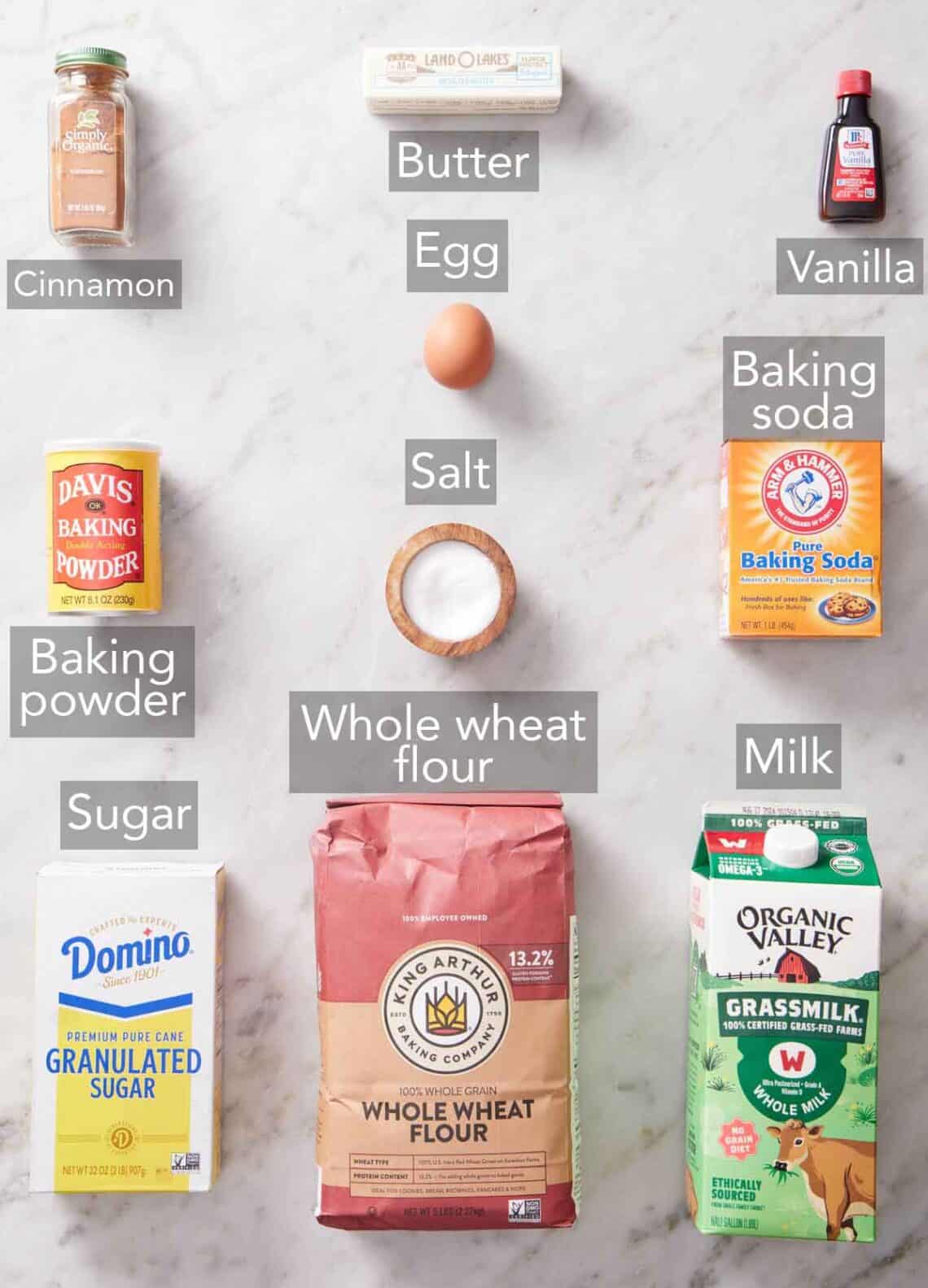
Whole wheat flour — whole wheat flour is made from whole grains and can start to taste rancid or bitter with age, so check the freshness date on your package or give it a good smell. If it smells bad, then buy a fresh bag.
Granulated sugar — using a touch of white sugar in the pancake batter is less about flavoring and more about assisting with caramelization. Feel free to use an equal amount of brown sugar sugar or cane sugar.
Baking powder & baking soda — since whole grain flour is denser than white flour, I use both kinds of leavener to achieve fluffiness.
Ground cinnamon, vanilla extract & salt — for seasoning. Cinnamon adds a lovely sweetness without adding extra sugar, but you can omit it if you prefer or use a different spice. You can also use an equal amount of vanilla paste for the extract.
Milk & egg — these act as the binders. You are welcome to use any dairy or plant-based milk you prefer. Buttermilk is also a great option—the extra acidity yields an extra tender crumb.
Unsalted butter — adding a bit of melted butter to the batter gives these whole-grain pancakes a welcome richness. Make sure you have enough to cook the pancakes for golden brown edges with a delicious buttery flavor.
What Type Of Whole Wheat Flour Should I Use?
You have options! You can use standard whole wheat flour, typically made from hard red wheat—this yields pancakes with a nuttier, more wheat-forward flavor. Alternatively, use golden or white whole wheat flour, which is made from hard white wheat. This flour is made the same way and is still whole grain but has a milder flavor.
How To Make Whole Wheat Pancakes
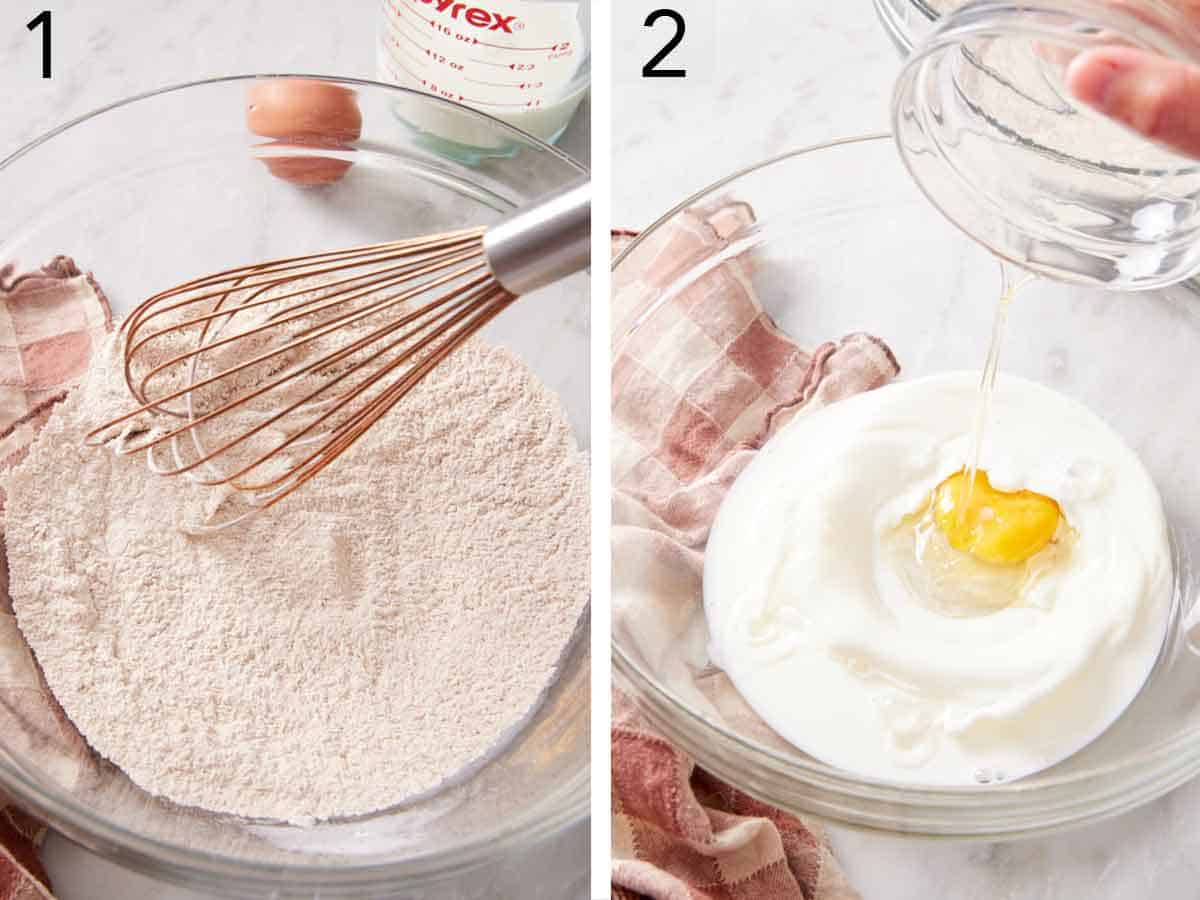
1. In a large bowl, whisk together dry ingredients—flour, sugar, baking powder, baking soda, salt and cinnamon.
2. In a medium bowl, whisk together the wet ingredients—start with ¾ cup of milk, the egg, and vanilla, mixing until well combined.

3. Pour the milk mixture into the flour mixture.
4. Add the melted butter. Fold it all together until just combined. (The pancake batter will be slightly lumpy—this is normal.) Let it rest for 5 minutes while you preheat the griddle to give the whole wheat flour time to rehydrate.
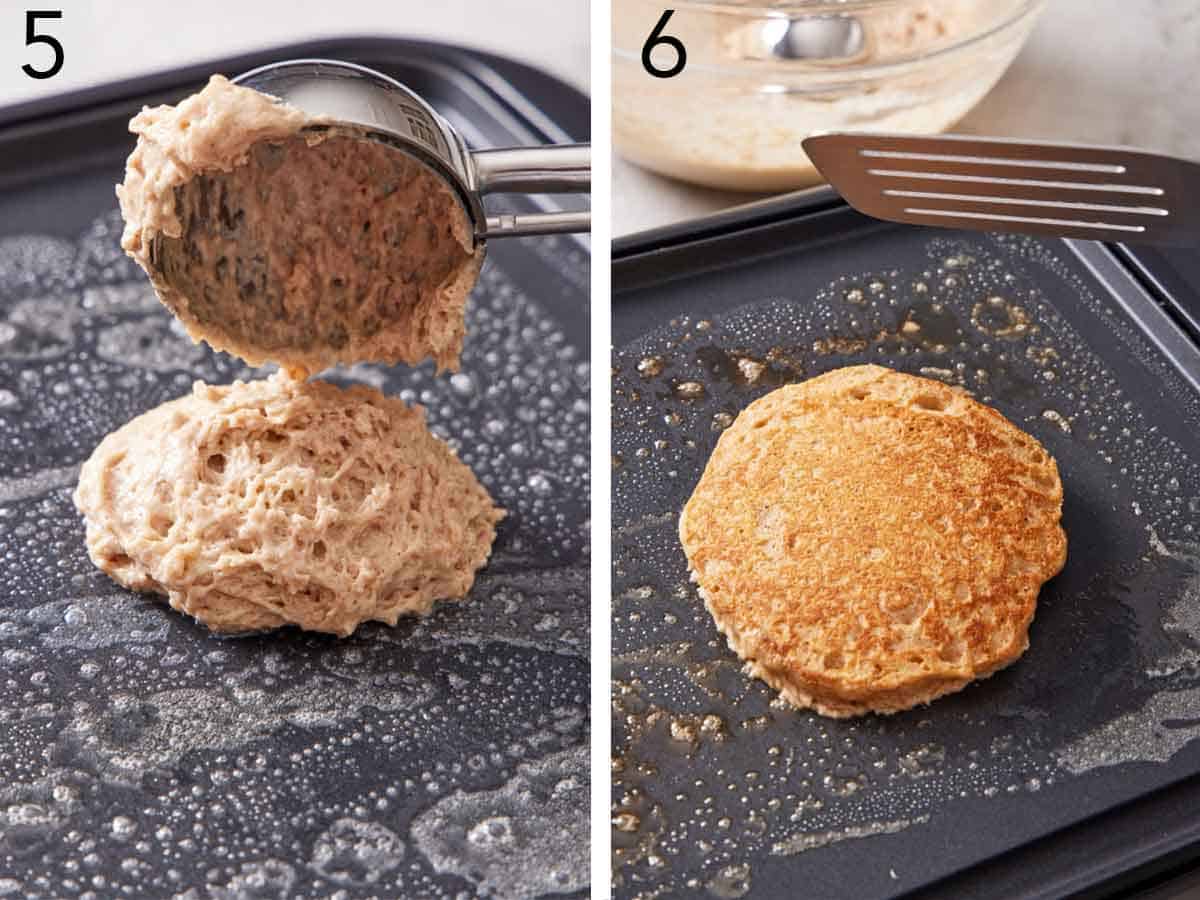
5. Heat a large skillet or griddle over medium-high heat. Once hot, reduce to medium heat and rub or brush with butter to lightly grease the pan. Use a ¼ cup measuring cup to add pancake batter to the griddle.
6. Cook for about 3 minutes until golden on the bottom and bubbles start to appear on the top, then flip over and cook for 1 to 2 more minutes or until golden brown. Serve the whole grain pancakes warm with your desired toppings and sides.
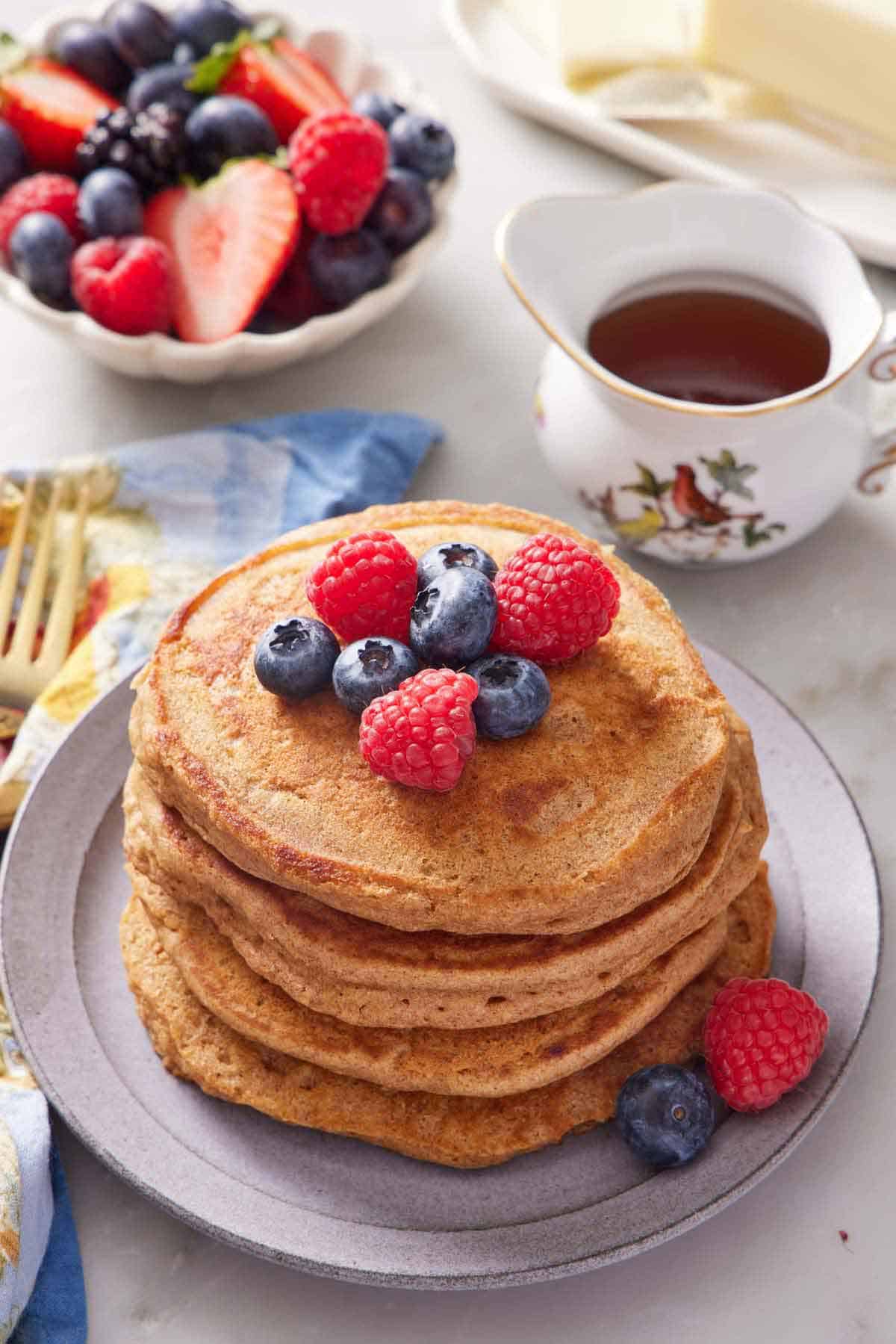
Can The Batter Be Made The Day Before?
Since the baking soda activates as soon as it comes into contact with liquid and will slowly become less active with time, I don’t recommend making the batter ahead of time. That said, you can give yourself a bit of a head start by mixing the dry ingredients the night before.
Or, make a big batch to use like pancake mix, and store it in an airtight container in the pantry for several months. When you want to make a batch of pancakes, just measure out 1 cup plus 1 tablespoon of the dry mix and add the milk, eggs, and butter!
Can I Make These With Less Whole Wheat Flour?
Absolutely! If 100% whole wheat pancakes aren’t your preference, but you still want some heartiness, you can easily experiment with different ratios of whole wheat and all-purpose flour for a lighter texture and flavor. Just be sure to use the same overall amount of flour (120g/ 1 cup).
I recommend trying 50% whole wheat (60g) and 50% all-purpose (60g) for a good balance of heartiness and fluffiness. If you want them even lighter, like my classic pancakes with just a hint of whole grain flavor, use 25% whole wheat (30g) and 75% all-purpose (90g).
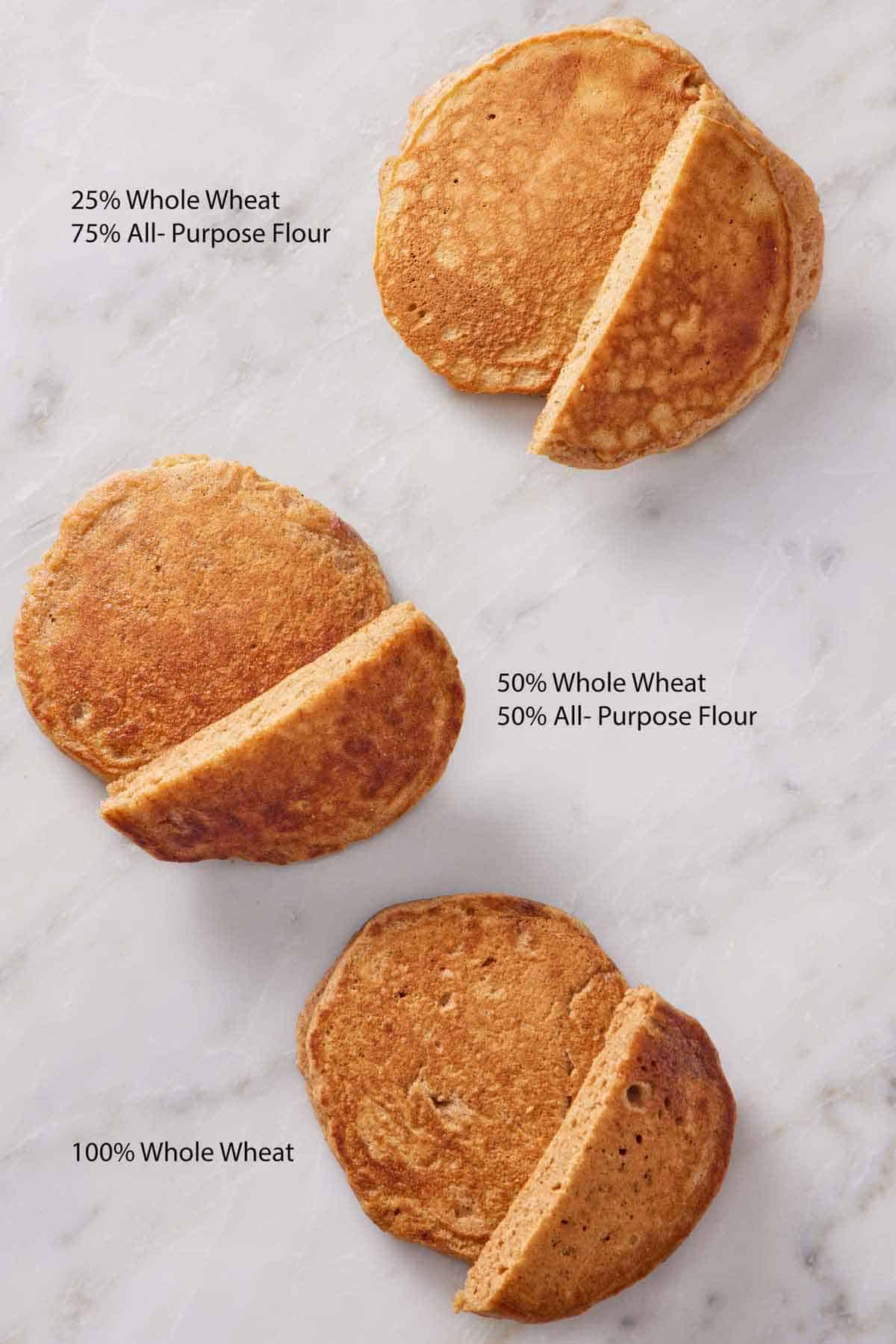
Topping Ideas
- Go traditional with maple syrup and butter or a light dusting of powdered sugar.
- Serve with fresh fruit like sliced bananas or fresh berries.
- Make it extra special with a dollop of freshly whipped cream or vanilla Greek yogurt.
- Try warming strawberry jam or your favorite fruit preserves to drizzle on top like syrup.
- Chopped baked pears or fried apples are also delightful.
How To Freeze Pancakes
Allow the whole wheat pancakes to cool completely to room temperature, preferably on a wire rack, to minimize condensation and keep them from getting soggy. Stack them with pieces of parchment paper to separate each pancake and place them in an airtight container or freezer bag, removing as much air as possible. Freeze for up to 2 months.
Reheating Instructions: To reheat the pancakes, I recommend using either an air fryer or a toaster oven set to 325ºF for 3-4 minutes. You can also re-fry them in a nonstick skillet over medium heat with a light coating of butter. Make sure to reheat them in a single layer to prevent sticking.
Pro Tips For Making This Recipe
- If you prefer a thinner pancake, stir in the extra ¼ cup of milk, 1 tablespoon at a time, until you reach your desired consistency.
- Don’t overmix the batter. Doing so can cause an excess of gluten to build up, yielding tough results. It’s okay if there are some small lumps in the batter– this actually makes the pancakes fluffier!
- Adjust the heat of your pan as needed. Pancakes cook somewhat slowly, so I recommend medium-low or low heat. You will probably need to adjust the heat a few times throughout cooking the full batch. Make sure your pan or griddle is preheated enough before you start. The butter should bubble lightly on contact; otherwise, your pancakes might cook up pale.
- Buttermilk can be used instead of whole milk. This swap-out will make even fluffier pancakes with a slightly tangy flavor. Because buttermilk is thicker than regular milk, I recommend using the entire 1 cup called for in this recipe. This will yield a thicker batter, so the pancakes may not spread quite as much.
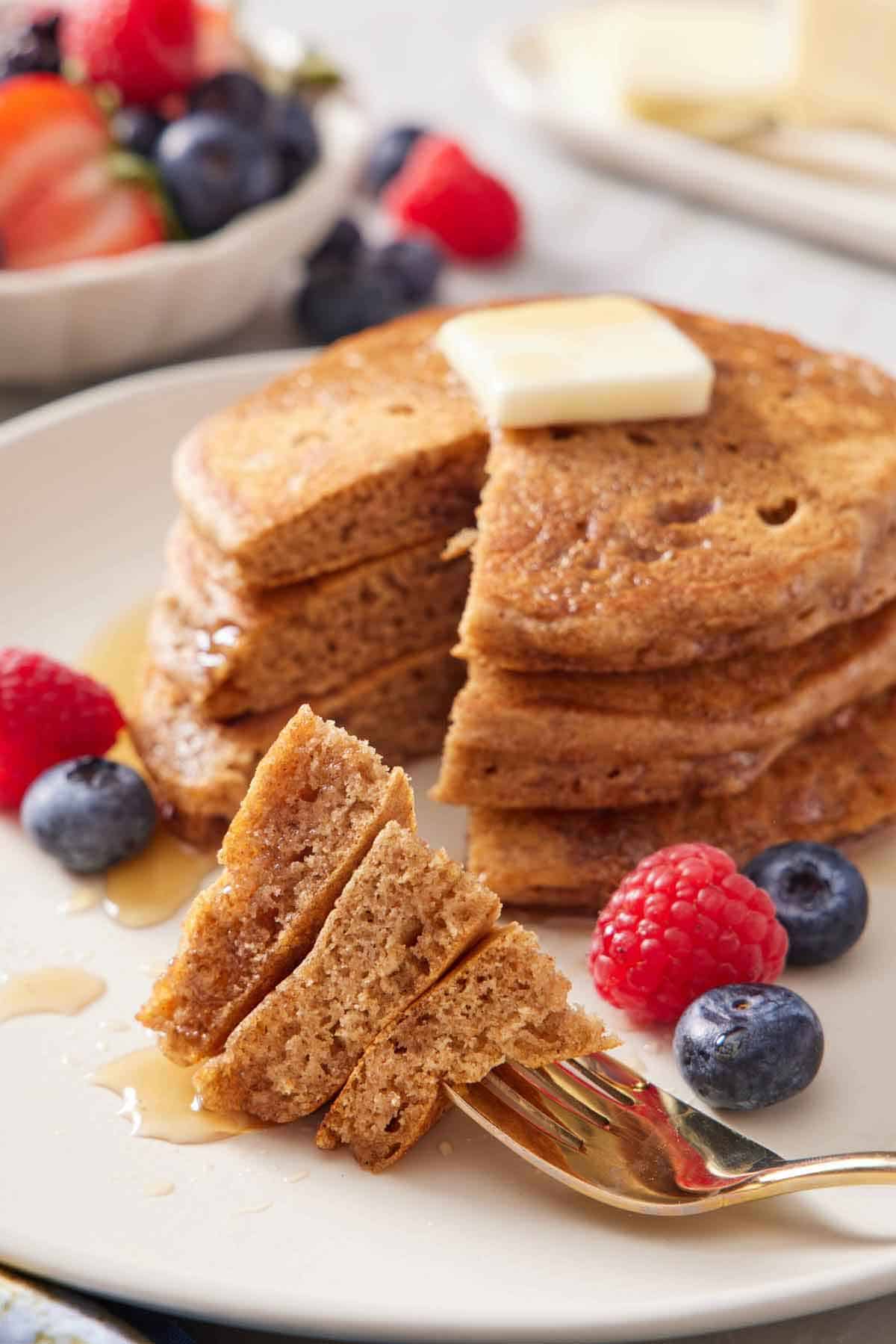
Frequently Asked Questions
Allow the whole-wheat pancakes to cool completely to room temperature before transferring them to an airtight container or zip-top bag—this will prevent condensation from forming and causing them to get soggy. They should keep well in the fridge for 3-5 days. For freezing instructions, see my section on “How to Freeze Pancakes” above.
Absolutely! After dolloping the batter on the griddle, sprinkle on fresh or frozen blueberries. For more details, check out my blueberry pancake recipe.
Sure thing! Feel free to add up to ¾ cup of your preferred mix-ins to the batter. Some of my favorites include chocolate chips or mini chocolate chips, chopped toasted walnuts, toasted coconut, or granola.
If you’ve tried this Whole Wheat Pancakes recipe, then don’t forget to rate it and let me know how you got on in the comments below. I love hearing from you!
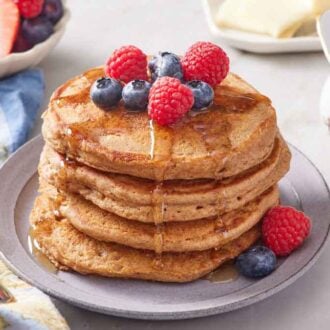
Whole Wheat Pancakes Recipe
Equipment
- Griddle or large nonstick skillet
Ingredients
- 1 cup whole wheat flour (120g)
- 1 tablespoon granulated sugar
- 2 teaspoons baking powder
- ½ teaspoon baking soda
- ¾ teaspoon salt
- ½ teaspoon ground cinnamon
- ¾ to 1 cup milk (180 to 240ml)
- 1 large egg
- 1 teaspoon vanilla extract
- 2 tablespoons unsalted butter melted and cooled slightly
Instructions
- In a large bowl, whisk together the flour, sugar, baking powder, baking soda, salt and cinnamon.
- In a medium bowl, whisk together ¾ cup of milk, the egg, and vanilla until well combined.
- Pour the milk mixture into the flour mixture, then add the melted butter. Fold it all together just until combined. (The batter should be slightly lumpy.) Let it rest for 5 minutes while you preheat the griddle. (This helps to hydrate the whole wheat flour.) If you prefer a thinner pancake, stir in the extra ¼ cup of milk, 1 tablespoon at a time, until you reach your desired consistency.
- Heat a large skillet or griddle over medium-high heat. Once hot, reduce to medium heat and rub or brush with butter to lightly grease the pan. Use a ¼ cup measuring cup to add pancake batter to the griddle.
- Cook for about 3 minutes until golden on the bottom and bubbles start to appear on the top, then flip over and cook for 1 to 2 more minutes or until golden brown.
- Serve the pancakes warm with butter, a drizzle of maple syrup, and fresh fruit, if you like.
Notes
- If you prefer a thinner pancake, stir in the extra ¼ cup of milk, 1 tablespoon at a time, until you reach your desired consistency.
- Don’t overmix the batter. Doing so can cause an excess of gluten to build up, yielding tough results. It’s okay if there are some small lumps in the batter– this actually makes the pancakes fluffier!
- Adjust the heat of your pan as needed. Pancakes cook somewhat slowly, so I recommend medium-low or low heat. You will probably need to adjust the heat a few times throughout cooking the full batch. Make sure your pan or griddle is preheated enough before you start. The butter should bubble lightly on contact; otherwise, your pancakes might cook up pale.
- Buttermilk can be used instead of whole milk. This swap-out will make even fluffier pancakes with a slightly tangy flavor. Because buttermilk is thicker than regular milk, I recommend using the entire 1 cup called for in this recipe. This will yield a thicker batter, so the pancakes may not spread quite as much.



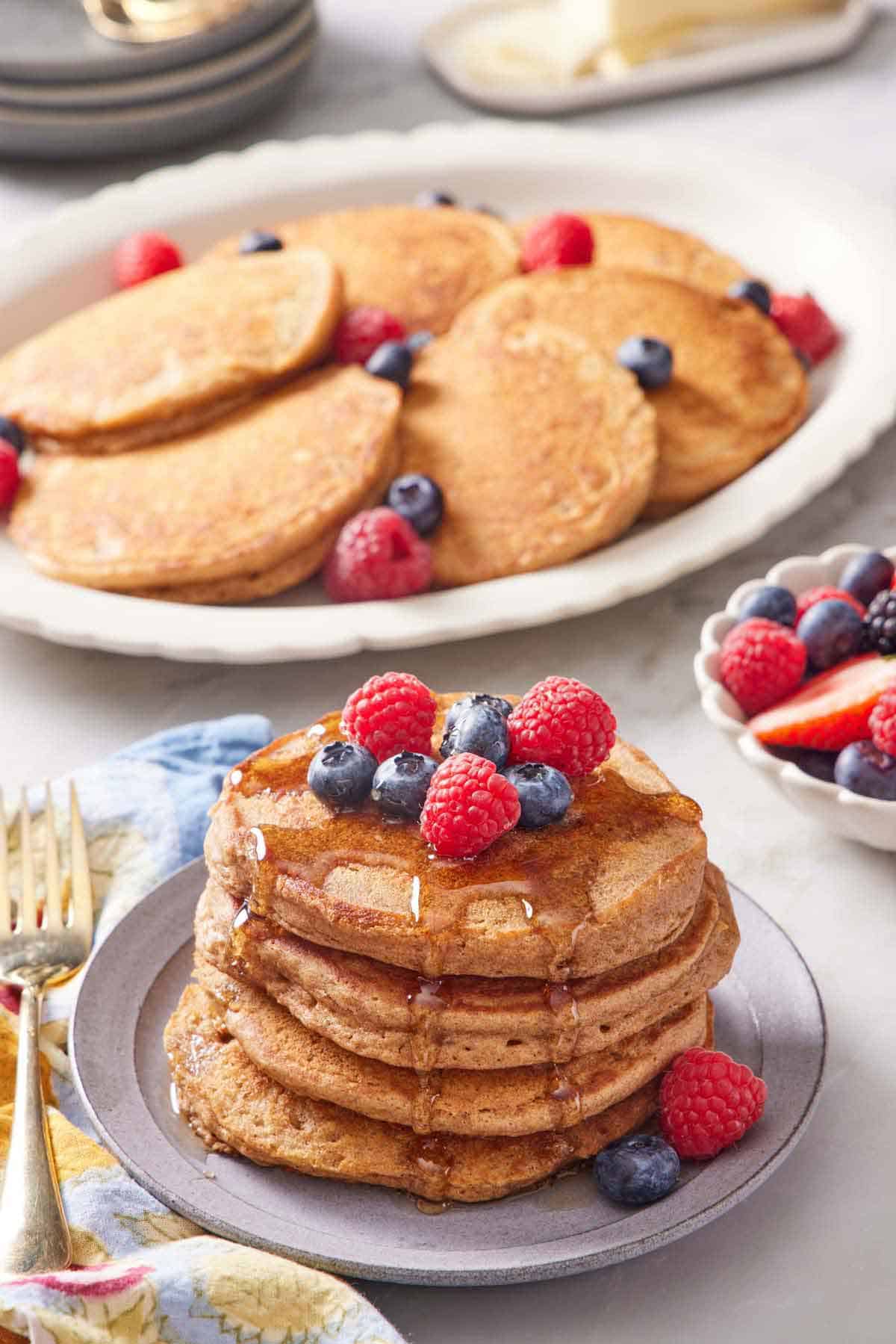
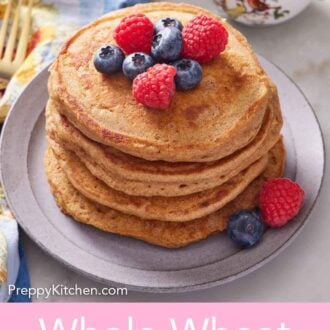
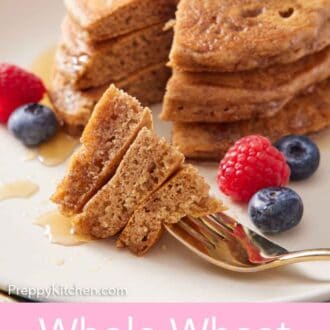
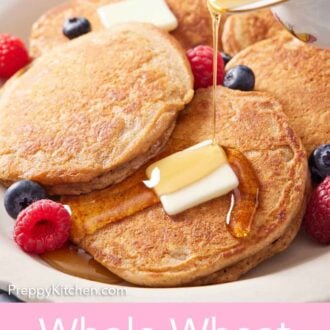
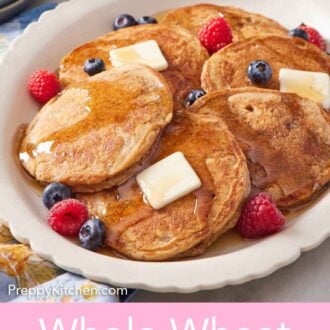
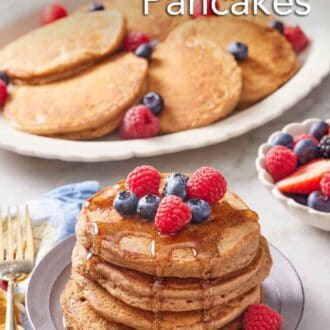
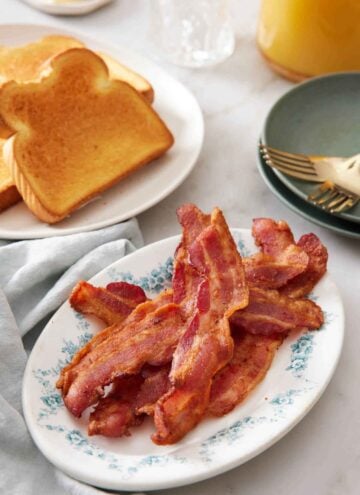
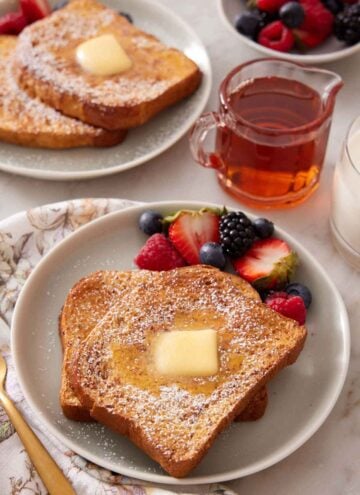
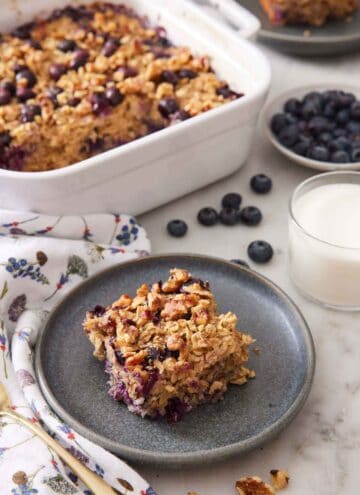
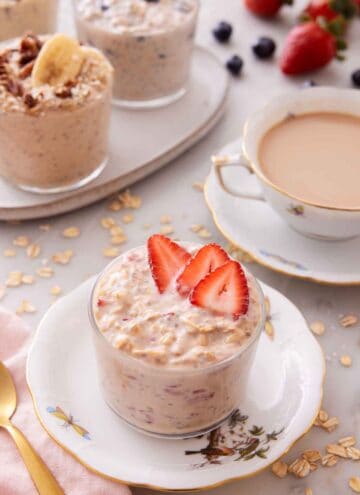
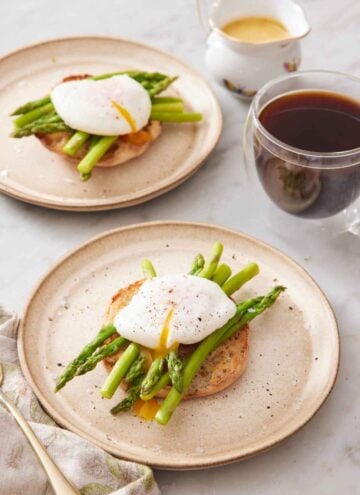
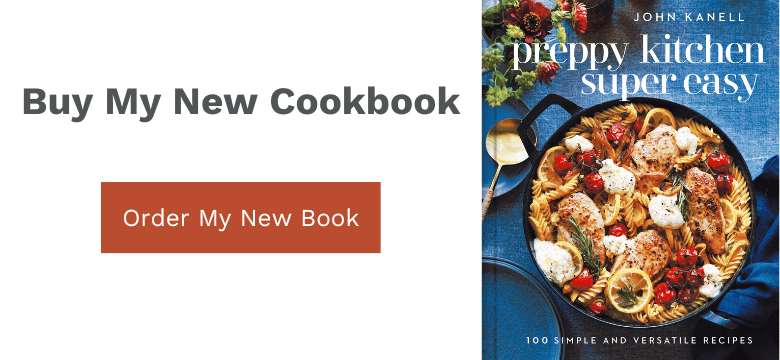
Leave a Reply